

John 6
6 After these things Jesus went over the sea of Galilee, which is the sea of Tiberias.
2 And a great multitude followed him, because they saw his miracles which he did on them that were diseased.
3 And Jesus went up into a mountain, and there he sat with his disciples.
4 And the passover, a feast of the Jews, was nigh.
5 When Jesus then lifted up his eyes, and saw a great company come unto him, he saith unto Philip, Whence shall we buy bread, that these may eat?
6 And this he said to prove him: for he himself knew what he would do.
7 Philip answered him, Two hundred pennyworth of bread is not sufficient for them, that every one of them may take a little.
8 One of his disciples, Andrew, Simon Peter's brother, saith unto him,
9 There is a lad here, which hath five barley loaves, and two small fishes: but what are they among so many?
10 And Jesus said, Make the men sit down. Now there was much grass in the place. So the men sat down, in number about five thousand.
11 And Jesus took the loaves; and when he had given thanks, he distributed to the disciples, and the disciples to them that were set down; and likewise of the fishes as much as they would.
12 When they were filled, he said unto his disciples, Gather up the fragments that remain, that nothing be lost.
13 Therefore they gathered them together, and filled twelve baskets with the fragments of the five barley loaves, which remained over and above unto them that had eaten.
14 Then those men, when they had seen the miracle that Jesus did, said, This is of a truth that prophet that should come into the world.
15 When Jesus therefore perceived that they would come and take him by force, to make him a king, he departed again into a mountain himself alone.
16 And when even was now come, his disciples went down unto the sea,
17 And entered into a ship, and went over the sea toward Capernaum. And it was now dark, and Jesus was not come to them.
18 And the sea arose by reason of a great wind that blew.
19 So when they had rowed about five and twenty or thirty furlongs, they see Jesus walking on the sea, and drawing nigh unto the ship: and they were afraid.
20 But he saith unto them, It is I; be not afraid.
21 Then they willingly received him into the ship: and immediately the ship was at the land whither they went.
7 Philip answered him, Two hundred pennyworth of bread is not sufficient for them, that every one of them may take a little.
8 One of his disciples, Andrew, Simon Peter's brother, saith unto him,
9 There is a lad here, which hath five barley loaves, and two small fishes: but what are they among so many?
10 And Jesus said, Make the men sit down. Now there was much grass in the place. So the men sat down, in number about five thousand.
11 And Jesus took the loaves; and when he had given thanks, he distributed to the disciples, and the disciples to them that were set down; and likewise of the fishes as much as they would.
12 When they were filled, he said unto his disciples, Gather up the fragments that remain, that nothing be lost.
13 Therefore they gathered them together, and filled twelve baskets with the fragments of the five barley loaves, which remained over and above unto them that had eaten.
14 Then those men, when they had seen the miracle that Jesus did, said, This is of a truth that prophet that should come into the world.
15 When Jesus therefore perceived that they would come and take him by force, to make him a king, he departed again into a mountain himself alone.
16 And when even was now come, his disciples went down unto the sea,
17 And entered into a ship, and went over the sea toward Capernaum. And it was now dark, and Jesus was not come to them.
18 And the sea arose by reason of a great wind that blew.
19 So when they had rowed about five and twenty or thirty furlongs, they see Jesus walking on the sea, and drawing nigh unto the ship: and they were afraid.
20 But he saith unto them, It is I; be not afraid.
21 Then they willingly received him into the ship: and immediately the ship was at the land whither they went.
22 The day following, when the people which stood on the other side of the sea saw that there was none other boat there, save that one whereinto his disciples were entered, and that Jesus went not with his disciples into the boat, but that his disciples were gone away alone;
23 (Howbeit there came other boats from Tiberias nigh unto the place where they did eat bread, after that the Lord had given thanks:)
24 When the people therefore saw that Jesus was not there, neither his disciples, they also took shipping, and came to Capernaum, seeking for Jesus.
25 And when they had found him on the other side of the sea, they said unto him, Rabbi, when camest thou hither?
26 Jesus answered them and said, Verily, verily, I say unto you, Ye seek me, not because ye saw the miracles, but because ye did eat of the loaves, and were filled.
27 Labour not for the meat which perisheth, but for that meat which endureth unto everlasting life, which the Son of man shall give unto you: for him hath God the Father sealed.
28 Then said they unto him, What shall we do, that we might work the works of God?
29 Jesus answered and said unto them, This is the work of God, that ye believe on him whom he hath sent.
30 They said therefore unto him, What sign shewest thou then, that we may see, and believe thee? what dost thou work?
31 Our fathers did eat manna in the desert; as it is written, He gave them bread from heaven to eat.
32 Then Jesus said unto them, Verily, verily, I say unto you, Moses gave you not that bread from heaven; but my Father giveth you the true bread from heaven.
33 For the bread of God is he which cometh down from heaven, and giveth life unto the world.
34 Then said they unto him, Lord, evermore give us this bread.
35 And Jesus said unto them, I am the bread of life: he that cometh to me shall never hunger; and he that believeth on me shall never thirst.
36 But I said unto you, That ye also have seen me, and believe not.
37 All that the Father giveth me shall come to me; and him that cometh to me I will in no wise cast out.
38 For I came down from heaven, not to do mine own will, but the will of him that sent me.
39 And this is the Father's will which hath sent me, that of all which he hath given me I should lose nothing, but should raise it up again at the last day.
40 And this is the will of him that sent me, that every one which seeth the Son, and believeth on him, may have everlasting life: and I will raise him up at the last day.
41 The Jews then murmured at him, because he said, I am the bread which came down from heaven.
42 And they said, Is not this Jesus, the son of Joseph, whose father and mother we know? how is it then that he saith, I came down from heaven?
43 Jesus therefore answered and said unto them, Murmur not among yourselves.
44 No man can come to me, except the Father which hath sent me draw him: and I will raise him up at the last day.
45 It is written in the prophets, And they shall be all taught of God. Every man therefore that hath heard, and hath learned of the Father, cometh unto me.
46 Not that any man hath seen the Father, save he which is of God, he hath seen the Father.
47 Verily, verily, I say unto you, He that believeth on me hath everlasting life.
48 I am that bread of life.
49 Your fathers did eat manna in the wilderness, and are dead.
50 This is the bread which cometh down from heaven, that a man may eat thereof, and not die.
51 I am the living bread which came down from heaven: if any man eat of this bread, he shall live for ever: and the bread that I will give is my flesh, which I will give for the life of the world.
52 The Jews therefore strove among themselves, saying, How can this man give us his flesh to eat?
53 Then Jesus said unto them, Verily, verily, I say unto you, Except ye eat the flesh of the Son of man, and drink his blood, ye have no life in you.
54 Whoso eateth my flesh, and drinketh my blood, hath eternal life; and I will raise him up at the last day.
55 For my flesh is meat indeed, and my blood is drink indeed.
56 He that eateth my flesh, and drinketh my blood, dwelleth in me, and I in him.
57 As the living Father hath sent me, and I live by the Father: so he that eateth me, even he shall live by me.
58 This is that bread which came down from heaven: not as your fathers did eat manna, and are dead: he that eateth of this bread shall live for ever.
59 These things said he in the synagogue, as he taught in Capernaum.
60 Many therefore of his disciples, when they had heard this, said, This is an hard saying; who can hear it?
61 When Jesus knew in himself that his disciples murmured at it, he said unto them, Doth this offend you?
62 What and if ye shall see the Son of man ascend up where he was before?
63 It is the spirit that quickeneth; the flesh profiteth nothing: the words that I speak unto you, they are spirit, and they are life.
64 But there are some of you that believe not. For Jesus knew from the beginning who they were that believed not, and who should betray him.
65 And he said, Therefore said I unto you, that no man can come unto me, except it were given unto him of my Father.
66 From that time many of his disciples went back, and walked no more with him.
67 Then said Jesus unto the twelve, Will ye also go away?
68 Then Simon Peter answered him, Lord, to whom shall we go? thou hast the words of eternal life.
69 And we believe and are sure that thou art that Christ, the Son of the living God.
70 Jesus answered them, Have not I chosen you twelve, and one of you is a devil?
71 He spake of Judas Iscariot the son of Simon: for he it was that should betray him, being one of the twelve.
Praise The Lord JESUS CHRIST!!!
Capernaum
Praise The Lord JESUS CHRIST!!!
Capernaum
Modern shore of the Sea of Galilee, showing the location of Capernaum. Archaeological evidence indicates the town did not begin until the 2nd century B.C., which explains why it is only mentioned in the New Testament, not the Old. It is located below sea level, and is 10 miles (16 kilometers) from Tiberias. The ruins can be reached by road and by boat. (Photo by BiblePlaces.com—a ChristianAnswers associate.)
C
apernaum was a large Galilean fishing village and busy trading center. This place is of special interest to Christians because of its frequent mention in the history of Jesus Christ. Peter, Andrew, James and John also lived here. It played a unique and important part in Christ’s life and ministry, and in his outreach to the people of Israel. The inhabitants of Capernaum, including various high ranking citizens, were given unique and abundant opportunities to hear Jesus Christ’s message firsthand and witness His awesome power and love.
2.5 miles (4 km) from the Jordan River, Capernaum stood on the northwestern shore of the Sea of Galilee(modern Lake Kinneret, which the Bible also called the lake of Gennesaret, Sea of Chinnereth and the Sea of Tiberias). The ancient city of Capernaum was abandoned about a thousand years ago or more, and was rediscovered by archaeologists beginning in the 1800s. In modern times, it is called Kefar Nahum (Hebrew) and Talhum (Arabic).
The Gennesaret area was one of the most prosperous and crowded districts of Israel. Capernaum lay on the great Via Maris highway between Damascus (Syria) and Caesarea Maritima on the Mediterranean Sea, and between Tyre and Egypt. Customs taxes were collected from travelers at this crossroads (Matthew 9:9). This was the job of Levi, the tax collector, who became Christ’s disciple and was later named Matthew. Jews criticized Jesus for befriending him and other tax collectors.
Caravans stopped at Capernaum to resupply themselves with produce and dried fish. At the lake shore, where Peter and other fishermen worked, archaeologists discovered a fish sales area.
This well-built structure measured 2 meters in width and 5 meters in length and contained two large, rather shallow, semicircular pools, one at each end, with a rectangular platform in the middle on which, presumably, the fish were cleaned and sold… The two pools had a thick coat of watertight plaster. [Herold Weiss, “Recent Work at Capernaum,” Bible and Spade, Vol. 10, No. 1 (Associates for Biblical Research, 1981), p. 24.]
After our Lord’s expulsion from Nazareth (Matt. 4:13-16; Luke 4:16-31), Capernaum became his “own city.” It was the scene of many acts and incidents of his life (Matt. 8:5, 14,15; 9:2-6, 10-17; 15:1-20; Mark 1:32-34, etc.)
Well-preserved ruins of Capernaum’s white stone synagogue that replaced the one built by the centurion .
Excavations revealed one residence that stood out from the others. This house was the object of early Christian attention with 2nd century graffiti and a 4th century house church built above it. In the 5th century a large octagonal Byzantine church was erected above this, complete with a baptistery. Pilgrims referred to this as the house of the apostle Peter. (Caption and photos byBiblePlaces.com —a ChristianAnswers associate.)
SYNAGOGUE—The Bible tells us that a Roman centurion built a synagogue here for the Jews (Luke 7:1-5). His servant was later healed from severe palsy by Jesus (Matt. 8:5-13; Luke 7:1-10). The remains of what must have been a beautiful basalt synagogue has been discovered by archaeologists. As expected for such a sacred building, it was found at the highest point in town.
Capernaum synagogue wall with earlier basalt level below—the remains of the synagogue where Jesus taught
This is the synagogue where our Lord frequently taught (John 6:59; Mark 1:21; Luke 4:33). Here, Jesus cured a demon-posssed man (Mark 1:21-28) and delivered the sermon on the bread of life (John 6:25-59). He even restored the life of the daughter of one rulers of this synagogue (Mark 5:22; Luke 8:41).
The synagogue is near the lake, and is built so that when the Jews prayed here, they faced Jerusalem. It was destroyed along with Jerusalem's temple, around 70 A.D. Many years later, it was replaced with a white stone synagogue (perhaps 250-300 A.D.) (shown above).
PETER’S HOUSE - Only a few hundred feet from the synagogue, the stone house of the disciple Peter has also been found at Capernaum. This is where Jesus healed Peter’s mother-in-law and others (Matthew 8:14-16). Jesus may have lived with Peter while staying in Capernaum. In the years following Jesus' death and resurrection, the house apparently became a house-church. Centuries later, Christians honored the site by building a church here. It was destroyed in a later conquest of the city. Archaeologists have excavated both the church and the earlier house below. Stanislao Loffreda reported,
Literary sources and recent archaeological discoveries make the identification of the house of St. Peter in Capernaum virtually certain.The house was built at the very end of the Hellenistic period (first century B.C.). In the second half of the first century A.D. some peculiar features set apart this building from all the others so far excavated in Capernaum. Here, in fact, the pavements received floors of lime several times. Interesting enough, many pieces of broken lamps were found in the thin layers of lime. …One hundred and thirty-one inscriptions were found. They were written in four languages, namley: in Greek (110), Aramaic (10), Estrangelo (9), and Latin (2).
The name of Jesus appears several times. He is called Christ, the Lord, and the Most High God. An inscription in Estrangelo mentions the Eucharist.
There are also symbols and monograms, namely: crosses of different forms, a boat, the monogram of Jesus. The name of St. Peter occurs at least twice: his monogram is written in Latin but with Greek letters. In another graffito St. Peter is called the helper of Rome. A third inscription mentions Peter and Berenike. This Peter, however, might be the name of a pilgrim. On several hundred pieces of plaster, decorative motifs appear. The colors employed are: green, blue, yellow, red, brown, white and black. Among the subjects one can distinguish floral crosses, pomegranates, figs, trifolium, stylized flowers and geometric designs such as circles, squares, etc.
…At the beginning of the fifth century, the house of St. Peter was still standing, but it had been previously changed into a church. This we learn from Eteria, a Spanish pilgrim, who wrote in her diary: “In Capernaum, the house of the Prince of the Apostles (=St. Peter) became a church. The walls, however, (of that house) have remained unchanged to the present day.”
[Stanislao Loffreda, “Caperaum - Jesus' Own City,” Bible and Spade, Vol. 10, No. 1 (Associates for Biblical Research, 1981), pp. 12, 7-8.]
Mary, the mother of Jesus, made her way to Capernaum with her other sons (Matt. 12:46,48,49). It was here that Christ uttered the memorable words, “Who is my mother? and who are my brethren? And he stretched forth his hand toward his disciples, and said, Behold my mother and my brethren!”
- Drove evil spirit from a man in the synagogue (Mark 1:21-28)
- Paralyzed man let down through the roof and healed (Mark 2:1-12)
- Jesus caused four of disciples to catch fish in a miraculous way (Luke 5:1-11)
- Through a fish, Jesus supplied tribute tax money needed by Peter (Matthew 17:24-27)
- Healing of the centurion’s servant afflicted with palsy (Matt. 8:5-13)
- Healing of the son of a nobleman in the King’s court (Herod Antipas) (John 4:46-54)
- Healing many other people and casting out demons, as “all the city was gathered together at the door” (Mark 1:29-34)
Despite the unique number of evidences our Lord presented to them, most of the people of Capernaum remained unrepentant disbelievers. Because they turned so strongly away from the uniquely gracious light given, they were strongly judged. “For unto whomsoever much is given, of him shall be much required…” (Luke 12:48). Thus, along with nearby Chorazin and Bethsaida, Capernaum received a very stern warning from Jesus (Matt. 11:21-24). “It shall be more tolerable for the land of Sodom in the day of judgment, than for thee.” Ultimately, the cities were all destroyed, and Capernaum became virtually uninhabited ruins for centuries.
Today, Capernaum’s inhabitants consist of a Franciscan Monastery and a nearby Greek Orthodox Church.
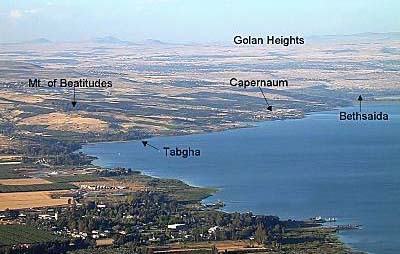
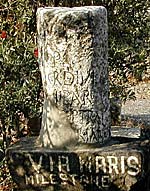
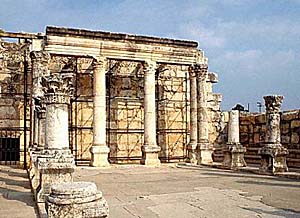
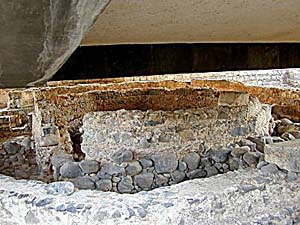
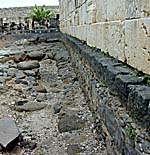
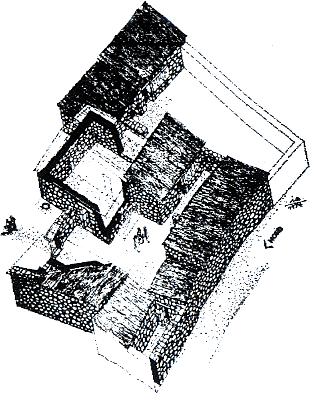
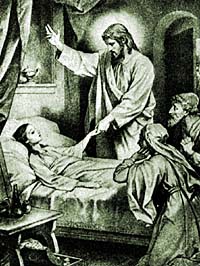
No comments:
Post a Comment